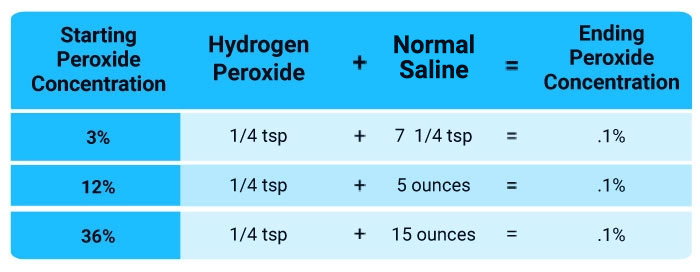Have you ever woken up one morning to find your eyes red, irritated, puffy and watery? This common condition describes viral conjunctivitis, often called “pink eye”.
Although it may seem like a minor inconvenience, viral conjunctivitis can have a significant impact on your daily life and eye health. Unlike bacterial or allergic conjunctivitis, viral conjunctivitis is caused by viruses, usually adenovirus. These viruses often accompany other viral infections such as the common cold or flu.
Viral conjunctivitis is highly contagious and can spread quickly, especially in shared spaces such as schools and workplaces.
Know the key differences between allergic, bacterial and viral conjunctivitis.
Understanding the difference between viral, bacterial and allergic conjunctivitis is critical to effective treatment and recovery.
• Allergic conjunctivitis It is caused by allergens such as pollen or pet hair, which leads to itchy and watery eyes.
• Bacterial conjunctivitis It is caused by bacteria such as Staphylococcus aureus, Streptococcus pneumoniae and Haemophilus influenzae and causes a thick yellow-green discharge that makes the eyelids stick, especially after sleeping. These bacteria can enter the eyes through direct contact with contaminated hands, surfaces, or respiratory droplets.
Redness may initially appear in one eye but may spread if not treated quickly. Perceptible inflammation or swelling is more common in bacterial cases. Unlike viral conjunctivitis, bacterial conjunctivitis does not show systemic symptoms such as mucus or sore throat, which helps distinguish it from its viral counterpart.
Bacterial conjunctivitis usually presents with rapid onset of symptoms, worsening rapidly within a day or two and becoming more severe if left untreated. If not treated properly, the bacterial infection can spread to both eyes and lead to serious eye infections, indicating the need for timely medical intervention.
• Viral conjunctivitis The thin, clear conjunctiva that lines the inside of the eyelid and covers the white part of your eye is infected. Common symptoms include redness of the whites of the eye or the inner eyelid, discharge from the eye, a constant itching or burning sensation that causes blinking, and a watery or mucus-like discharge that may irritate the skin, especially upon waking. .
Additionally, viral conjunctivitis may include symptoms such as runny nose, sore throat, or fever, which may indicate an underlying viral infection. Although generally less intense than in allergic conjunctivitis, patients may feel a constant itching or burning sensation.
Viral conjunctivitis is transmitted through direct contact with infected fluids, contaminated surfaces, or droplets from an infected person’s cough or sneeze. Sharing personal items such as towels, make-up or contact lenses facilitates the spread of the virus.
Several factors increase the risk of contracting viral conjunctivitis, including living in close proximity to an infected person, a weakened immune system, and poor hygiene such as washing hands or touching the eye with unwashed hands.
Symptoms of viral conjunctivitis may last one to two weeks, gradually improving as the body fights off the virus. Most cases resolve without the need for antibiotics, relying on your body’s immune response to recover.
Common medical treatments
Common treatments for viral conjunctivitis focus primarily on relieving symptoms. Supportive care, such as artificial tears and lubricating eye drops, can help relieve irritation and reduce redness.
Applying a clean, cool cloth to closed eyes can relieve discomfort and swelling. In severe cases, especially those caused by the herpes virus, antiviral eye drops or ointments may be prescribed.
However, although conventional treatments can relieve symptoms, they do not directly attack the underlying viral infection. In addition, overuse of antibiotics for viral conjunctivitis can contribute to antibiotic resistance and lead to unnecessary side effects. Accurate diagnosis is also important to avoid inappropriate treatments.
Natural remedies are the best
Maintaining impeccable hygiene is your first line of defense against viral conjunctivitis. It is especially important to wash your hands thoroughly with soap and water before touching your face or eyes. That said, excessive hand washing is counterproductive and can damage the skin on your hands and increase the risk of infection.
Avoid touching or rubbing your eyes to prevent further irritation and spread of the virus. Additionally, avoid sharing personal items such as towels, pillows, or makeup to reduce transmission risks.
A nutrient-dense diet supports overall eye health and immune function. Vitamins A, C, and E are antioxidants that protect eye cells and support the immune system. Including foods like carrots, citrus fruits, and leafy greens in your diet can provide these essential nutrients. The omega-3 fats found in small amounts of cold-water fatty fish reduce inflammation and promote eye health.
Staying hydrated by drinking plenty of water maintains good eye moisture and supports your body’s natural defenses. Other lifestyle habits that support the immune system include:
• sleep – Get 7 to 9 hours of quality sleep each night to help your body repair and strengthen its immune system.
• Stress Relief – Chronic stress can weaken the immune system, so it is important to practice relaxation techniques such as meditation, deep breathing or yoga.
• Exercise – Moderate exercise improves circulation and supports the immune system.
Nebulized hydrogen peroxide removes pink eye in 30 minutes
One of the most effective ways to quickly kill viral infections is nebulized peroxide, and this also works for pink eye. I recently treated myself this way, when I woke up with viral conjunctivitis in one eye and all my symptoms were gone 30 minutes after the treatment.
For respiratory infections, all you need is a nebulizer that produces a fine mist with properly mixed food-grade hydrogen peroxide. The only difference is that you place the face mask over the affected eye(s) instead of your mouth and nose.
Typically, food grade peroxide is available in 3% or 12% concentration, which should be reduced to 0.1% as shown in the table below.

Hydrogen peroxide (H2oh2) water molecule (H2O) with an extra oxygen atom, and it’s an extra oxygen atom to activate viral pathogens.
Some of your immune cells produce hydrogen peroxide to kill pathogens. Virus reproduction is stopped by killing the infected cell. So, hydrogen peroxide therapy is essentially about helping your immune cells perform their natural functions more effectively.
When to seek medical help
While viral conjunctivitis is generally self-limiting, some cases require professional medical evaluation. Persistent or severe eye pain may indicate a more serious condition that requires immediate attention.
Increased sensitivity to light can be a sign of corneal involvement or other complications that require prompt evaluation by an eye care professional. Any change in vision should be taken seriously and evaluated to rule out serious issues.
Viral conjunctivitis can cause complications such as keratitis, which is an inflammation of the cornea that can lead to scarring and loss of vision if left untreated. Bacterial superinfection can also occur, requiring antibiotic treatment.
Special attention should be paid to newborns, the elderly and those with weakened immune systems, as these groups are more prone to serious infections and complications.
Dispelling myths about viral conjunctivitis
It is important to clarify common misconceptions surrounding pink eye in order to promote accurate understanding and effective management.
A common misconception is that all pink eyes are contagious. While viral conjunctivitis is certainly contagious, bacterial and allergic types are not necessarily so. Understanding the specific type can help you manage transmission risks more effectively.
Another myth is that antibiotics are effective for viral conjunctivitis. Antibiotics only work against bacterial infections and are not effective against viral causes. Misuse of antibiotics can contribute to antibiotic resistance and other side effects, which emphasizes the importance of proper diagnosis.
In addition, the belief that viral conjunctivitis always requires medical treatment is not entirely correct. Most of the issues will resolve themselves with help. However, severe or complicated cases may require medical intervention, highlighting the importance of knowing when professional help is necessary.
Supporting overall eye health
Even if you don’t have symptoms, regular eye exams can detect issues early and keep your eyes working at their best. Annual examinations are recommended, especially if you wear contact lenses or have a history of eye disease.
Preventive measures are also important. Wearing protective glasses or goggles during activities that pose a risk to your eyes, such as sports or certain work environments, can help prevent injuries and infections.
Maintaining a healthy lifestyle also contributes to eye health. Quitting smoking reduces the risk of eye diseases such as cataracts and macular degeneration. Controlling chronic conditions such as diabetes and high blood pressure is also important because these conditions can seriously affect eye health.
Therefore, in closing, although viral conjunctivitis is common and often self-limiting, it can cause great discomfort and discomfort. Understanding the causes, recognizing the symptoms, and using natural remedies like nebulized hydrogen peroxide will empower you to effectively manage and prevent this condition.
Adopting a holistic approach—focusing on hygiene, nutrition, immune support, and natural remedies—will improve your eye health and overall well-being in the long run.
Test your knowledge with today’s quiz!
Take today’s quiz to see how much you’ve learned Mercola.com article yesterday.
What is the main benefit of starting with a “maintenance phase” before trying to lose fat?

